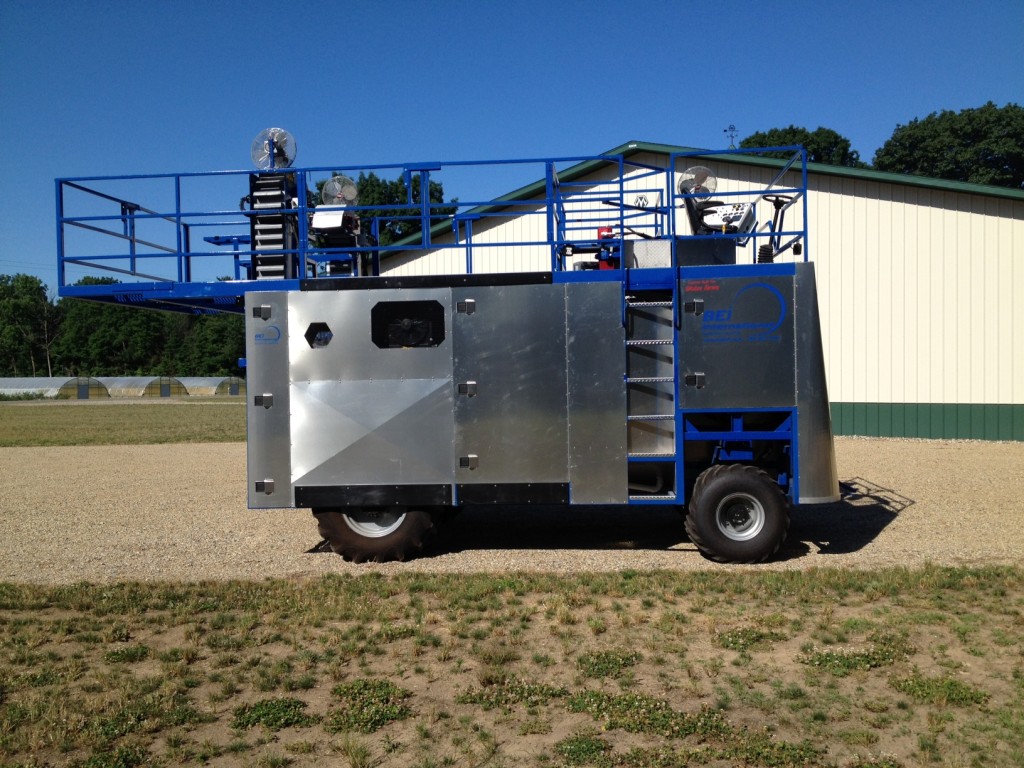by Lacee Shepard

As workers at farms and orchards become more scarce, the need for mechanical harvesting is rising.
Much of the produce that used to be hand-harvested is now almost completely harvested by machine, said Ken Nye, a commodity specialist for the Farm Bureau. That includes cherries and grapes.
Efforts are underway to increase mechanization in harvesting, Nye said. The efforts have increased in importance in times when labor is scarce.
The shortage of workers has been noticeable for years, said Nye, but it wasn’t until recently that it became a real problem.
“We had a small year for crops in 2012 due to frost,” he said. “This caused people to find other jobs, and to not find a reason to come back.”
There have been many strides in mechanized harvesting technology, some crops lend themselves to various mechanical harvesting more easily than others, Nye said. “Certain commodities like apples and asparagus and some of the vegetable crops, particularly fresh market crops, are extremely difficult to do with mechanical harvesting.
Another factor to consider is what the crop will be used for.
“Some commodities like blueberries are machine-harvested but also hand-harvested depending on what the use of that product is going to be,” Nye said. “If it’s going to be for fresh market, it would tend to be hand-harvested. If it’s for processing, more than likely it’s machine harvested.”
Blueberries are one of the fruits that are seeing a rise in mechanical harvesting, said Brian Kreiger, a business development manager at BEI international, a machine harvester manufacturer in South Haven.
The lack of hand-harvesters is affecting more people this season, Kreiger said. Even farmers who are pro hand-picked are making the move to mechanically harvesting blueberries.
“They’ve always used the machines for the processed market. Now they’re using it more for their fresh market,” Kreiger said.
Although harvesting equipment is expensive, growers can make enough money during a season to make up for the price, said Kreiger.
“Standard blueberry pickers range from a small entry-level one for $50,000 up to $200,000,” Kreiger said. “Blueberry harvester cost to operate, including fuel and labor, is about 10 cents a pound.
“To hand pick it costs 65 cents per pound or even up to $1 per pound.”
Craig Anderson, regulatory compliance assistant at Michigan Farm Bureau, said changes in mechanized harvesting can be beneficial to the grower by increasing the amount harvested.
“Where a typical farm had 40 acres and 20 to 30 workers, they now can harvest 100 to 300 acres with a dozen people,” Anderson said.
Nye said most mechanical harvesting is for produce that is going to be processed, but farmers are considering it for other purposes.
“The cost of any new technology is going to be closely considered by the producer,” Nye said. “They are going to stack up the cost of hand harvest or hand labor on one side and stack up the cost of the machine and the number of acres and so on. They are going to try and figure out what’s to be gained in quality and higher value if it’s hand-harvested compared to mechanical.”